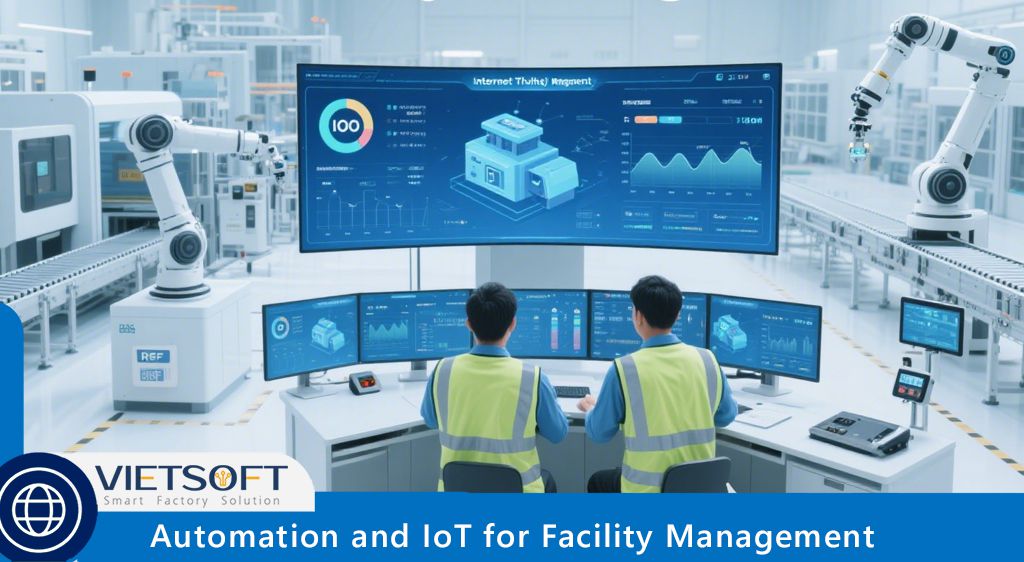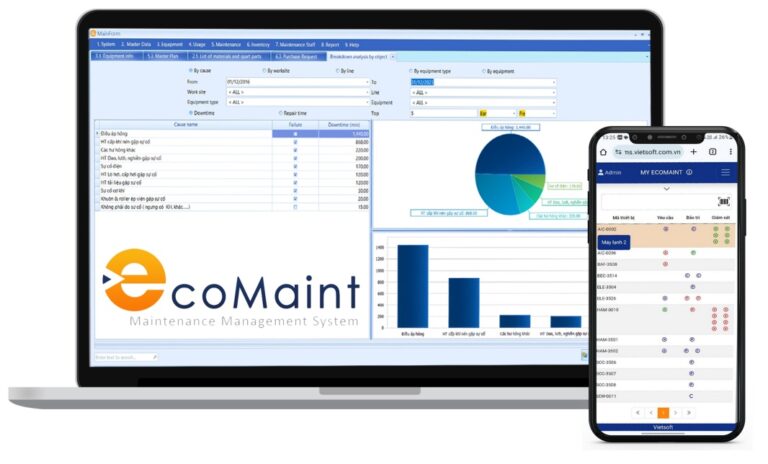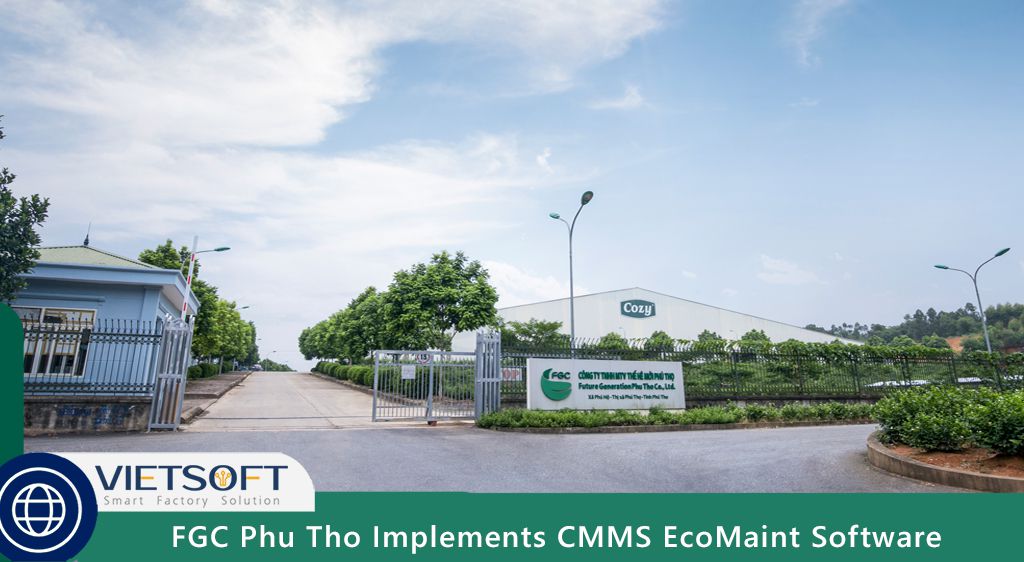
The integration of Automation and IoT for Facility Management is revolutionizing how modern facilities are managed, offering unprecedented efficiency, cost savings, and sustainability. As industries evolve, facility managers face increasing pressure to optimize operations, reduce downtime, and ensure occupant comfort while meeting stringent regulatory and environmental standards. Automation, paired with the Internet of Things (IoT), provides a robust solution to these challenges by enabling real-time monitoring, predictive maintenance, and data-driven decision-making.
This article explores the role of Automation and IoT for Facility Management, its benefits, challenges, and practical applications, with insights tailored for maintenance professionals and facility managers in Vietnam and beyond.
I. What Is Automation and IoT in Facility Management?
Automation in facility management refers to the use of technology to perform repetitive tasks, control systems, and streamline operations with minimal human intervention. The Internet of Things (IoT) complements this by connecting devices—such as sensors, actuators, and smart equipment—via the internet to collect, share, and analyze data in real time. Together, Automation and IoT for Facility Management create smart, responsive environments that optimize resources, enhance safety, and improve operational efficiency.
For example, IoT-enabled sensors can monitor the performance of HVAC systems, while automation adjusts temperature settings based on occupancy patterns. This synergy transforms static facilities into dynamic ecosystems, enabling facility managers to proactively address issues and optimize performance.
II. Key Components of IoT in Facility Management
- Sensors: Monitor environmental conditions (temperature, humidity, air quality) and equipment performance.
- Connected Devices: Include smart thermostats, lighting systems, and security cameras that communicate over the internet.
- Data Analytics Platforms: Process IoT data to generate actionable insights for decision-making.
- Automation Systems: Execute predefined actions based on IoT data, such as adjusting lighting or scheduling maintenance.
III. Why Automation and IoT Matter for Facility Management
The role of Automation and IoT for Facility Management is critical in addressing modern operational challenges. Traditional facility management often relies on manual processes and reactive maintenance, leading to inefficiencies, higher costs, and unexpected downtime. By contrast, IoT-driven automation enables proactive strategies, leveraging real-time data to anticipate issues and optimize resources. For maintenance professionals, this means transitioning from firefighting breakdowns to preventing them, ensuring smoother operations and longer asset lifespans.
IV. The Evolution of Facility Management
Facility management has evolved from basic upkeep of physical infrastructure to a strategic discipline that enhances workplace productivity, safety, and sustainability. With Automation and IoT for Facility Management, managers can:
- Monitor equipment health in real time to prevent failures.
- Optimize energy usage to reduce costs and environmental impact.
- Enhance occupant comfort through personalized environmental controls.
- Ensure compliance with safety and regulatory standards.
V. Benefits of Automation and IoT for Facility Management
The integration of Automation and IoT for Facility Management offers a range of benefits that directly impact operational efficiency, cost savings, and occupant satisfaction. Below are the key advantages, explained with practical insights for maintenance professionals.
1. Predictive Maintenance for Reduced Downtime
IoT sensors continuously monitor equipment parameters such as vibration, temperature, and pressure. By analyzing this data, automation systems can predict potential failures before they occur. For example, a vibration sensor on a factory motor can detect irregular patterns, triggering an automated maintenance alert. This approach minimizes unplanned downtime, which can cost businesses thousands of dollars per hour.
Example: In a manufacturing plant, IoT sensors detect a slight increase in bearing temperature in a conveyor system. The automation system schedules maintenance during a planned downtime window, preventing a costly breakdown.
2. Energy Efficiency and Cost Savings
Energy costs are a significant portion of facility operating expenses. Automation and IoT for Facility Management enable precise control of energy-intensive systems like HVAC and lighting. Smart sensors adjust settings based on real-time occupancy or environmental conditions, reducing waste. According to the U.S. Energy Information Administration, buildings account for over 40% of global energy consumption, making IoT-driven optimization a critical tool for cost reduction.
Example: In an office building, IoT occupancy sensors turn off lights and reduce HVAC output in unoccupied areas
3. Enhanced Safety and Security
IoT-enabled security systems, such as smart cameras and access controls, provide real-time monitoring and automated alerts for unauthorized access or safety hazards. Automation ensures rapid responses, such as locking doors or activating alarms, enhancing occupant safety. For maintenance teams, this means fewer manual checks and more reliable security protocols.
Example: An IoT-enabled fire detection system in a warehouse triggers automated sprinklers and alerts the facility manager instantly, reducing response time and potential damage.
4. Optimized Space Utilization
IoT sensors track occupancy patterns, helping facility managers optimize space usage. Automation systems can adjust layouts or reallocate resources based on data insights, improving efficiency in offices, factories, or commercial spaces. This is particularly valuable in Vietnam’s growing urban centers, where space is at a premium.
Example: In a co-working space, IoT data reveals underutilized meeting rooms, prompting automation to adjust booking schedules and reduce energy use in those areas.
5. Data-Driven Decision Making
IoT devices generate vast amounts of data, which automation systems analyze to provide actionable insights. Facility managers can use these insights to optimize maintenance schedules, allocate resources, and plan long-term investments. For maintenance professionals, this means making informed decisions rather than relying on guesswork.
Example: A facility manager uses IoT data to identify a recurring issue in an HVAC system, leading to a strategic decision to upgrade to a more efficient model, saving costs over time.
6. Improved Occupant Experience
Automation and IoT for Facility Management enhance occupant comfort by creating responsive environments. Smart thermostats adjust temperatures based on preferences, while air quality sensors ensure healthy indoor conditions. This leads to higher employee satisfaction and productivity, a key consideration for businesses aiming to attract and retain talent.
Example: In a corporate office, IoT sensors detect high CO2 levels and trigger automated ventilation, improving air quality and employee focus.
VI. Practical Applications of Automation and IoT in Facility Management
The real-world applications of Automation and IoT for Facility Management span various industries, from manufacturing to commercial real estate. Below are key use cases, tailored for maintenance professionals and facility managers.
1. Smart Building Automation
IoT sensors and automation systems control critical building functions, such as HVAC, lighting, and security. For example, in a Vietnamese factory, IoT-enabled HVAC systems adjust cooling based on production schedules, reducing energy waste during off-peak hours.
2. Real-Time Asset Tracking
IoT devices like RFID tags and GPS trackers monitor the location and condition of assets, such as machinery or inventory. Automation systems use this data to optimize asset usage and prevent loss, critical for large-scale facilities like warehouses.
3. Environmental Monitoring
IoT sensors track temperature, humidity, and air quality, ensuring compliance with health and safety regulations. Automation systems adjust settings to maintain optimal conditions, reducing the workload for maintenance teams.
4. Predictive Maintenance with CMMS Integration
Computerized Maintenance Management Systems (CMMS) like CMMS EcoMaint by Vietsoft integrate seamlessly with IoT and automation. IoT sensors feed real-time equipment data into the CMMS, which uses automation to schedule maintenance tasks, assign technicians, and track work orders. This integration enhances predictive maintenance, reducing downtime and improving asset reliability.
VII. The Role of CMMS EcoMaint in Automation and IoT
For facility managers in Vietnam, CMMS EcoMaint by Vietsoft offers a powerful solution to harness Automation and IoT for Facility Management. This cloud-based platform integrates IoT data with automated maintenance workflows, enabling predictive maintenance, real-time asset tracking, and energy optimization. Key features include:
- Real-Time Monitoring: IoT sensors feed equipment data into CMMS EcoMaint, providing instant alerts for anomalies.
- Automated Work Orders: The system generates and assigns maintenance tasks based on IoT data, streamlining operations.
- Data Analytics: User-friendly dashboards offer insights into equipment performance, energy usage, and maintenance trends.
- Scalability: CMMS EcoMaint supports facilities of all sizes, from small offices to large industrial plants.
By integrating Automation and IoT for Facility Management, CMMS EcoMaint empowers facility managers to transition from reactive to proactive strategies, reducing costs and enhancing efficiency. Curious about how CMMS EcoMaint can transform your facility? Learn more about CMMS EcoMaint here.
Contact us for consultation via hotline: 0986778578 or email: sales@vietsoft.com.vn.
VIII. Future Trends in Automation and IoT for Facility Management
The future of Automation and IoT for Facility Management is bright, with emerging technologies set to further enhance capabilities. Key trends include:
1. Digital Twins
Digital twins are virtual replicas of physical assets, enabling real-time simulation and monitoring. Facility managers can use digital twins to test maintenance strategies or optimize energy usage without disrupting operations.
2. AI-Powered Analytics
Artificial Intelligence (AI) enhances IoT data analysis, providing deeper insights and predictive capabilities. AI algorithms can forecast equipment failures with greater accuracy, further reducing downtime.
3. 5G Connectivity
The rollout of 5G networks in Vietnam will enable faster, more reliable IoT device communication, supporting real-time automation in large facilities.
4. Sustainability Focus
IoT and automation will play a critical role in achieving net-zero energy goals, with smart systems optimizing energy and water usage to meet environmental regulations.
IX. Best Practices for Implementing Automation and IoT
To successfully adopt Automation and IoT for Facility Management, facility managers should follow these best practices:
1. Assess Facility Needs: Identify critical processes and equipment that would benefit from automation and IoT, such as HVAC systems or high-value assets.
2. Start Small: Begin with a pilot program to test IoT devices and automation workflows, ensuring compatibility and ROI.
3. Choose Scalable Solutions: Opt for platforms like CMMS EcoMaint that can grow with your facility’s needs.
4. Prioritize Cybersecurity: Implement strong security measures to protect IoT devices and data.
5. Train Staff: Equip maintenance teams with the skills to use IoT and automation tools effectively.
6. Partner with Experts: Work with trusted providers like Vietsoft to ensure seamless implementation and ongoing support.
X. Conclusion: Embracing Automation and IoT for Smarter Facilities
The integration of Automation and IoT for Facility Management marks a transformative shift in how facilities are managed. By leveraging real-time data, predictive maintenance, and automated workflows, facility managers can achieve unparalleled efficiency, cost savings, and occupant satisfaction. In Vietnam’s rapidly growing industrial and commercial sectors, tools like CMMS EcoMaint by Vietsoft are paving the way for smarter, more sustainable facilities.
For maintenance professionals and facility managers, adopting these technologies is not just about keeping up with trends—it’s about staying ahead in a competitive landscape. By embracing Automation and IoT for Facility Management, you can optimize operations, reduce costs, and create environments that enhance productivity and well-being.




